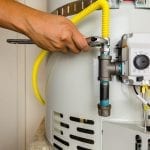Easy Guide to Caring for Your Home's Hot Water System
Easy Guide to Caring for Your Home's Hot Water System
Blog Article
How do you actually feel about Tips on Maintaining a Water Heater?

Hot water is important for everyday comfort, whether it's for a rejuvenating shower or washing meals. To ensure your hot water system runs effectively and lasts longer, regular maintenance is essential. This short article gives sensible pointers and understandings on just how to preserve your home's hot water system to prevent interruptions and costly repair work.
Introduction
Maintaining your home's warm water system could appear complicated, however with a couple of easy steps, you can ensure it runs efficiently for several years to find. This guide covers everything from understanding your hot water system to do it yourself upkeep tips and recognizing when to call expert assistance.
Significance of Maintaining Your Warm Water System
Normal maintenance not only expands the life-span of your hot water system yet likewise ensures it operates successfully. Ignoring maintenance can lead to lowered effectiveness, higher energy costs, and even premature failing of the system.
Indications Your Hot Water System Demands Upkeep
Understanding when your warm water system requires interest can prevent significant problems. Look out for indicators such as inconsistent water temperature, weird noises from the heater, or corroded water.
Flushing the Hot Water Heater
Purging your water heater gets rid of sediment build-up, improving performance and extending its life.
Checking and Changing Anode Rods
Anode rods protect against rust inside the tank. Checking and replacing them when broken is important.
Facility Problems Requiring Expert Help
Instances include significant leaks, electric problems, or if your hot water heater is consistently underperforming.
Regular Professional Upkeep Benefits
Expert maintenance can consist of thorough assessments, tune-ups, and making certain compliance with safety and security standards.
Checking and Adjusting Temperature Level Settings
Changing the temperature level settings makes sure optimal performance and safety and security.
DIY Tips for Upkeep
You can execute several upkeep jobs yourself to maintain your warm water system in top problem.
Looking for Leaks
On a regular basis inspect pipes and links for leaks, as these can result in water damages and greater bills.
Comprehending Your Warm Water System
Before diving into upkeep jobs, it's useful to comprehend the standard components of your hot water system. Normally, this includes the water heater itself, pipes, anode rods, and temperature controls.
Monthly Maintenance Tasks
Routine regular monthly checks can assist capture small issues before they intensify.
Checking Stress Relief Valves
Testing the pressure safety valve guarantees it operates correctly and prevents extreme stress build-up.
Shielding Pipelines
Insulating hot water pipes decreases warmth loss and can save power.
When to Call a Specialist
While DIY maintenance is advantageous, some problems need expert know-how.
Verdict
Normal maintenance of your home's hot water system is necessary for performance, long life, and price financial savings. By adhering to these pointers and knowing when to seek professional help, you can ensure a dependable supply of hot water without unexpected disturbances.
How to Maintain an Instant Hot Water Heater
Before tinkering with your hot water heater, make sure that it’s not powered on. You also have to turn off the main circuit breaker and shut off the main gas line to prevent accidents. Also turn off the water valves connected to your unit to prevent water from flowing into and out of the appliance. 2. When you’re done, you have to detach the purge valves’ caps. These look like the letter “T†and are situated on either side of the water valves. Doing so will release any pressure that has accumulated inside the valves while at the same time avoid hot water from shooting out and burning your skin. 3. When the purge valves’ caps are removed, you have to connect your hosing lines to the valves. Your unit should have come with three hoses but if it didn’t, you can purchase these things from any hardware or home repair shops. You can also get them from retail stores that sell water heating systems. Read the user’s manual and follow it to complete this task properly. When the hosing lines are connected, open the purge port’s valves. 4. You should never use harsh chemical cleaners or solutions when cleaning your unit. Make use of white vinegar instead. It should be undiluted and you’ll probably use about 2 gallons. 5. Now flush your water heater. This task should probably take about 40 minutes. We can’t give you specific directions for this because the procedure is carried out depending on the type, model and brand of your heater. With that being said, refer to the user’s manual. 6. When you’re done draining the unit, you have to turn off the purge port valves again. Remove the hosing lines that you earlier installed on each of the water valves. Put the valve caps (purge port) back in their respective places and be very careful so as not to damage the rubber discs that are found inside these caps. 7. Now that everything’s back in place, check your user’s manual again to find out how to reactivate your water heating system. 8. Once it is working, turn one of your hot water faucets on just to let air pass through the heater’s water supply pipes. Leave the tap on until water flows smoothly out of it. https://www.orrplumbing.com/blog/2014/september/how-to-maintain-an-instant-hot-water-heater/

As a devoted person who reads about What Kind of Maintenance Do Water Heaters Need?, I imagined sharing that editorial was smart. For those who enjoyed reading our blog post if you please don't forget to share it. Thanks for your time. Return soon.
Request Appointment Report this page